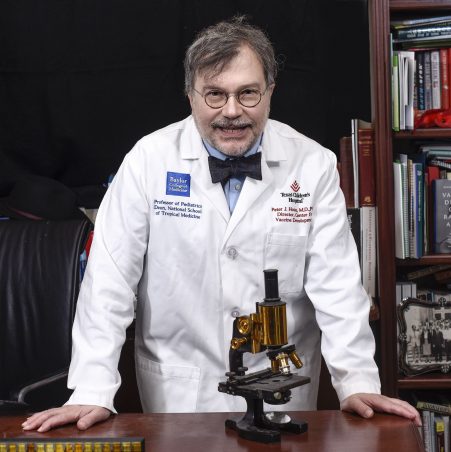<< Back
Rest-of-Year COVID Forecast From Top Vaccine Scientist (and Connecticut Native)

January 27, 2022
The COVID forecast the rest of the year is looking a lot like the weather forecast, so in the Northeast it should be safe to make your summer plans, says Dr. Peter Hotez, one of the nation’s top vaccine scientists.
“The obvious question people are asking,” says Dr. Hotez, a West Hartford native who served his internship at Hartford Hospital and is now co-director of the Texas Children’s Hospital Center for Vaccine Development and dean at Baylor’s National School of Tropical Medicine in Waco, Texas, “is ‘OK, can I make plans for this summer?’ The answer is yes, I think you can, but be prepared that nature could throw us a curveball and bring us a variant.”
Dr. Hotez, who joined Hartford HealthCare’s media briefing Jan. 27 from Texas via Zoom, does not envision Omicron, the current dominant variant, as the last-gasp strain before COVID-19 evolves into something more like the common cold. Instead, he looks to 2020 and 2021 as more likely predictors of COVID’s behavioral path through the United States. COVID-19 will thrive whenever weather drives people indoors because of seasonal heat or cold.
 Dr. Peter Hotez, a West Hartford native who’s now co-director of the Texas Children’s Hospital Center for Vaccine Development.
Dr. Peter Hotez, a West Hartford native who’s now co-director of the Texas Children’s Hospital Center for Vaccine Development.
“It’s probably going to be more predominant in the Southern states and Texas over the summer,” says Dr. Hotez, a Hall High graduate. “And so, in Connecticut, it may not become an issue until the fall or winter. It’s hard to know. This is only basing it on two years of the pandemic.”
Dr. Hotez has devoted much of his professional career to developing vaccines for tropical diseases such as hookworm and schistosomiasis in low- and middle-income countries. In the COVID era, an undervaccinated population is not only a health risk to the country but also a risk of producing, as when Omicron emerged from South Africa last November, a variant that quickly becomes a global health threat.
Dr. Hotez and his Baylor colleague, microbiologist Maria Elena Bottazzi, developed a COVID-19 vaccine authorized in December for use in India — a less-glamorous and much less expensive vaccine than the mRNA products from Pfizer-BioNTech and Moderna. The vaccine, called CORBEVAX, uses decades-old technology found in the hepatitis B vaccine that places a piece of the COVID-19 spike protein in yeast cells that then copy the protein and introduce it into the body’s immune system.
The vaccine is inexpensive, maybe $1.50 per dose, and unlike the mRNA vaccines, the CORBEVAX formulation is available free to encourage widespread distribution. India already has produced 250 million doses, says Dr. Hotez, with plans to produce up to 140 million a month on its way to more than 1 billion. One disadvantage: It’s not as quickly modified as mRNA vaccines to new variants.
Would such a familiar vaccine, with its recombinant protein sub-unit technology, have increased the likelihood of more Americans accepting a COVID-19 vaccine if CORBEVAX had been part of Operation Warp Speed vaccine development and distribution effort?
“Absolutely,” says Dr. Hotez. “I do think if we had a recombinant protein vaccine with the same technology as parents already have been giving to their kids for generations, yes, that could help close the vaccine hesitancy gap. No guarantee — I don’t have any social science surveys.”
Dr. Hotez now suggests an Operation Warp Speed 2.0 that expands the variety of vaccine technology against an extremely adaptive coronavirus.
“What is the longer-term strategy for our U.S. vaccine program?” he says. “Should we be re-engaging some additional technologies, maybe get the Novavax vaccine (which uses a protein made using moth cells and an adjuvant from tree bark) up or one like ours? That’s something that really needs a hard look at this point.”